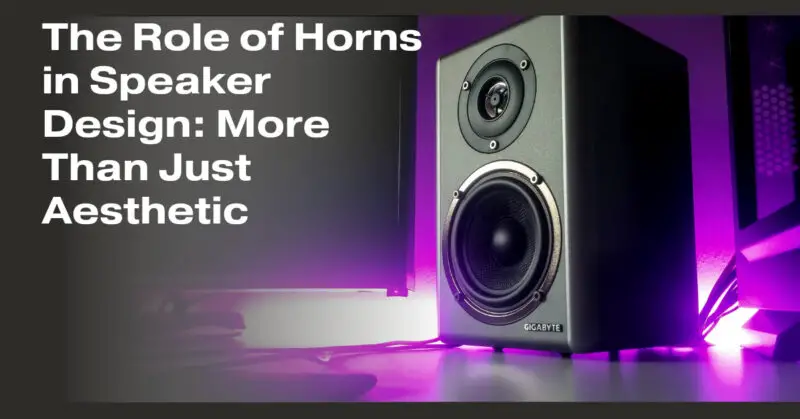Speaker horns, often seen in the designs of various audio equipment, serve a crucial function beyond their distinctive appearance. While they do contribute to the visual aesthetics of a speaker, their primary purpose is to enhance sound projection and efficiency. In this article, we’ll explore the role of horns in speaker design and their impact on audio quality.
1. Sound Projection:
One of the primary functions of speaker horns is to improve sound projection. This is achieved by directing and focusing sound waves in a specific direction, effectively increasing the speaker’s efficiency in delivering sound to a target area.
2. Efficiency and Sensitivity:
Horn-loaded speakers are known for their high efficiency and sensitivity. Sensitivity refers to how effectively a speaker converts electrical power into acoustic energy. Horns help in increasing sensitivity, which means that horn-loaded speakers can produce higher sound levels with less power input compared to direct radiating speakers.
3. Lower Distortion:
Horn-loaded designs can result in lower distortion levels, particularly in the midrange and low-frequency regions. This is because the driver’s diaphragm experiences less excursion (movement) when coupled with a horn, reducing nonlinearities in the speaker’s response.
4. Improved Directivity:
Horns can help control the directivity of sound, ensuring that it’s distributed more evenly in a given space. This characteristic is particularly valuable in applications where precise sound coverage is essential, such as in professional audio systems, public address systems, and live performances.
5. Extended Frequency Response:
Horn-loaded designs are often used to extend the frequency response of a speaker, especially in the case of subwoofers. By coupling a subwoofer driver with a horn, it’s possible to achieve deeper bass extension and higher sound pressure levels.
6. Size and Aesthetics:
The physical design of horn-loaded speakers can contribute to their aesthetic appeal. Some enthusiasts appreciate the vintage or unique appearance of horn speakers, which can be visually striking.
7. Challenges and Considerations:
While horn-loaded speakers offer numerous advantages, they also present some challenges and considerations:
- Size: Horns can be large and may not be suitable for all listening environments or applications.
- Complexity: Designing effective horn-loaded speakers can be complex, requiring careful engineering to achieve desired performance.
- Matching Components: Horns need to be precisely matched to the driver and the overall speaker design for optimal performance.
- Placement: Proper placement of horn-loaded speakers is essential to achieve the desired sound coverage and directivity.
8. Applications:
Horn-loaded speakers find applications in various settings, including:
- Live Sound Reinforcement: Horn-loaded loudspeakers are commonly used in concerts and large venues to project sound over long distances.
- Professional Audio: They are favored in professional audio settings for their efficiency and directional control.
- Cinema Sound: Some movie theaters use horn-loaded speakers to achieve the high sound pressure levels required for cinematic experiences.
- Home Audio: Horn-loaded speakers are also available for home audio enthusiasts seeking high-efficiency designs.
In conclusion, the role of horns in speaker design goes far beyond aesthetics. They significantly impact sound projection, efficiency, directivity, and overall audio quality. Whether you’re a professional sound engineer, a home audio enthusiast, or an audiophile, understanding the benefits and considerations of horn-loaded speakers can help you make informed decisions when choosing audio equipment for your specific needs.

